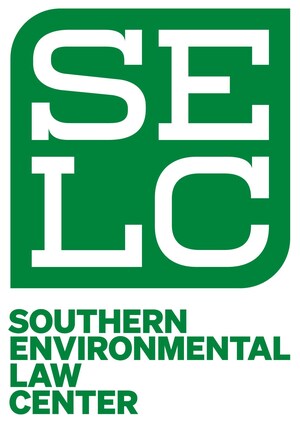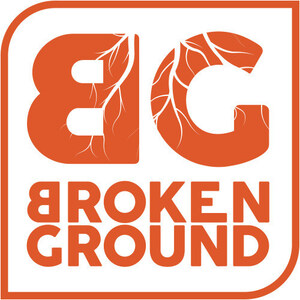ATLANTA, Dec. 21, 2022 /PRNewswire/ -- The Southern Environmental Law Center has completed the fifth year of tracking regional utility solar policy data through its Rates of Solar website, including identifying the biggest trends that are "making" and "braking" Southerners' ability to go solar.
Rates of Solar enables individual customers to determine whether their utility is encouraging or impeding access to solar and provides a comprehensive picture of utilities' policies regionwide.
"No path to widespread solar adoption can bypass the South," said Senior Attorney and Leader of SELC's Solar Initiative, Jill Kysor. "Despite the fact that some Southern states have embraced our region's significant solar potential over the last five years and have seen significant economic benefits and local job creation as a result, there are still many utilities that continue to pursue policy roadblocks with the goal of making it harder — not easier — for people to go solar."
When SELC launched Rates of Solar in 2018, there were roughly 10,000 megawatts of solar installed or committed to be installed in the South. Today, solar has more than doubled across the region, reaching 23,000 megawatts installed or committed to be installed over the next several years. Approximately 25,000 homes and businesses in our six-state region had rooftop solar in 2018; today, that total has quadrupled to over 100,000.
"Tracking utility solar policies in the South over the last five years has given us a very clear picture of both the progress and roadblocks to date," said Kysor. "Many utilities have implemented good solar policies that lower customer electricity bills, create local jobs and advance the clean energy economy. Others have opted for punitive policies that hurt their customers and the entire region by leaving solar potential untapped."
Southern states have a lot to gain from improving policies to make solar more accessible to customers and embrace the burgeoning solar industry, which has grown at an average annual rate of 33% over the last decade and represents a significant economic engine in a region with a poverty rate far above other parts of the country. Southern communities also have some of the highest residential utility bills in the nation and going solar is one of the few ways customers can meaningfully lower their electricity costs.
Yet despite the clear benefits of going solar, Southern utilities and regulators have not consistently implemented policies that open access to this renewable energy source.
For customers deciding whether to install solar, it often comes down to economics. "Net metering" policies give people credit on their utility bills for the energy that their solar panels generate and makes rooftop solar much more affordable, allowing people to use all of the solar energy that they produce before purchasing electricity from their utility, therefore saving money on their electric bills.
Net metering has emerged over the last five years as the clearest indicator of whether Southern states are solar "makers" or "brakers."
North Carolina and South Carolina lead the pack
North Carolina currently leads SELC's six-state region in rooftop solar installations, topping 35,000 according to recent U.S. Energy Information Administration data. The state first implemented a strong net metering policy in 2005 for its two biggest utilities, Duke Energy Carolinas and Duke Energy Progress. This cleared the way for steady and strong growth each of the last five years, with an additional boost from a rebate program implemented from 2017-2022. Revisions to the current net metering and rebate framework have been proposed but are still pending with state regulators.
South Carolina has led the pack in rooftop solar per capita and now exceeds 29,000 rooftop solar customers. South Carolinians benefitted from annual net metering policies which have been in place for Dominion Energy South Carolina and Duke Energy territories from 2008-2021. Additional distributed energy resource ("DER") programs helped jumpstart the South Carolina market in 2015, and it's seen strong growth ever since. New net metering policies based on time-of-use pricing were implemented at the beginning of 2022.
Virginia is catching up
While Virginia got a slower start on the rooftop solar market than the Carolinas, it is quickly catching up. The Virginia Clean Economy Act, passed in 2020, gave the market a clear runway for takeoff, lifting the state's net metering program cap from 1% to 6% of the utility's peak load forecast and including additional provisions for residents earning a lower or fixed income and nonprofits seeking to go solar. Annual net metering has been available to most Virginians since at least as far back as 2000.
Tennessee and Alabama are lagging behind
Alabama has held steady as a "braker" for the past five years due to punitive policy roadblocks, with currently only around 500 solar customers.
Since 2013, Alabama Power has imposed some of the highest monthly fees on rooftop solar customers of any regulated utility nationwide. Every year, the average rooftop solar customer with a five-kilowatt system pays Alabama Power approximately $300 in additional fees, totaling up to more than $9,000 over a typical system's lifespan.
Tennessee has also fallen behind, hovering under 3,000 customers due to a lack of net metering and low compensation rates for exported electricity. Even worse, the low compensation rate for solar exports varies each month, making it nearly impossible to estimate bill savings for potential customers.
Georgia has made some progress, but missed an opportunity to expand net metering
Georgia Power credited its rooftop solar customers for the energy they produced at a very low rate until 2020, when regulators required the utility to introduce a monthly net metering program that credited customers at a much fairer rate. But there was a catch: the program only had 5,000 spots for more than 2.5 million Georgia Power customers.
The new program was so popular that it filled up in less than two years. Customers who were not part of it receive only about a quarter of the value they would get under the monthly net metering program. This week, utility regulators voted against expanding the popular net metering program and instead adopted new solar export rate that falls just below 7 cents per kilowatt hour. While the new policy offers a slight improvement on the existing rock bottom rates, regulators missed an opportunity to do more. Without net metering, Georgia is likely to continue lagging behind neighbors like the Carolinas when it comes to rooftop solar growth.
Across the South, utility and state policies remain the central "makers" or "brakers" of widespread adoption of solar. SELC continues to advocate for customers' ability to make energy decisions on their own properties and lower their monthly bills, and encourage the ripple-effect economic benefits and local job creation within communities regionwide.
The Southern Environmental Law Center is one of the nation's most powerful defenders of the environment, rooted in the South. With a long track record, SELC takes on the toughest environmental challenges in court, in government, and in our communities to protect our region's air, water, climate, wildlife, lands, and people. Nonprofit and nonpartisan, the organization has a staff of 200, including over 100 attorneys, and is headquartered in Charlottesville, Va., with offices in Asheville, Atlanta, Birmingham, Chapel Hill, Charleston, Nashville, Richmond, and Washington, D.C. southernenvironment.org
SOURCE Southern Environmental Law Center

WANT YOUR COMPANY'S NEWS FEATURED ON PRNEWSWIRE.COM?
Newsrooms &
Influencers
Digital Media
Outlets
Journalists
Opted In






Share this article